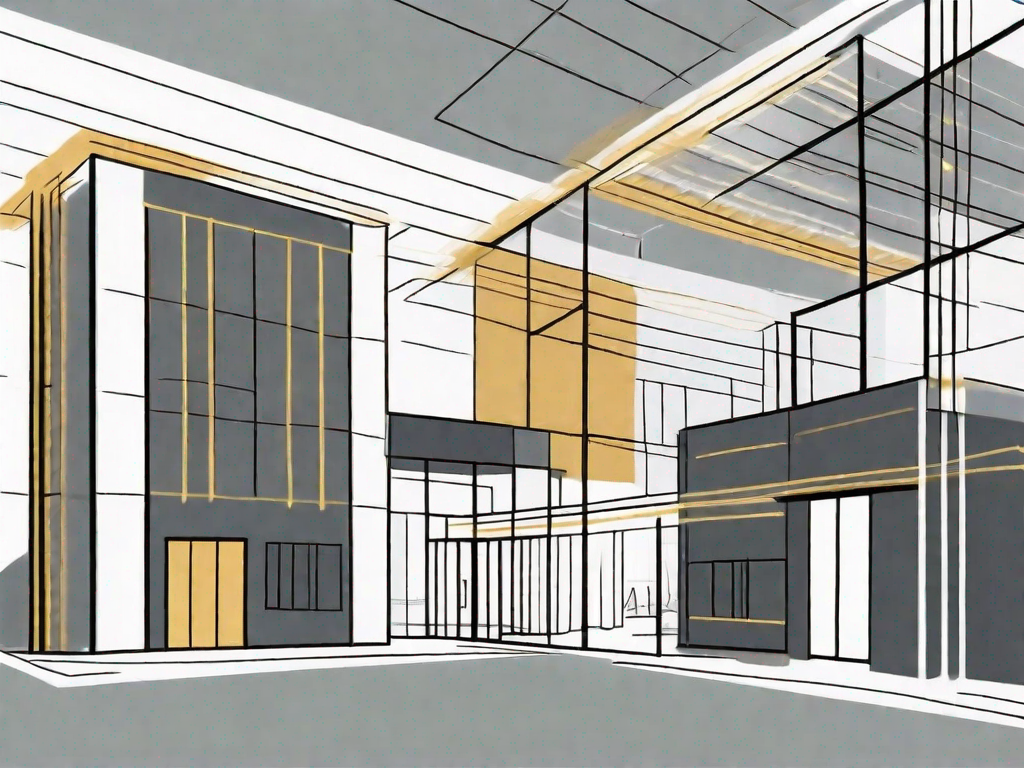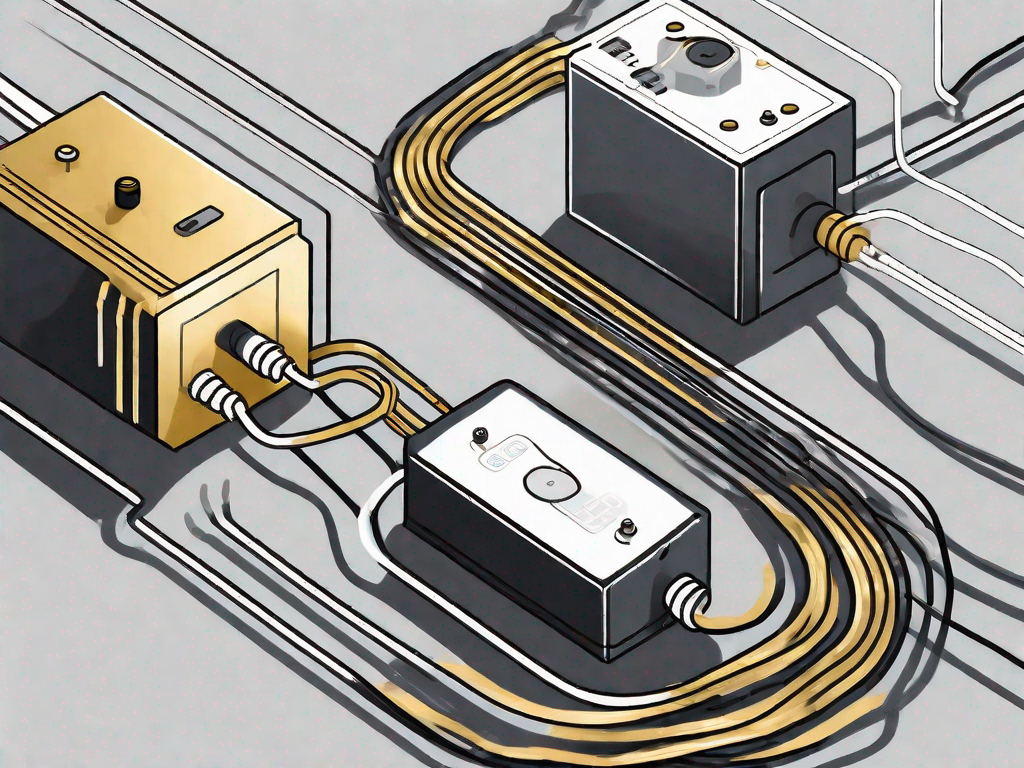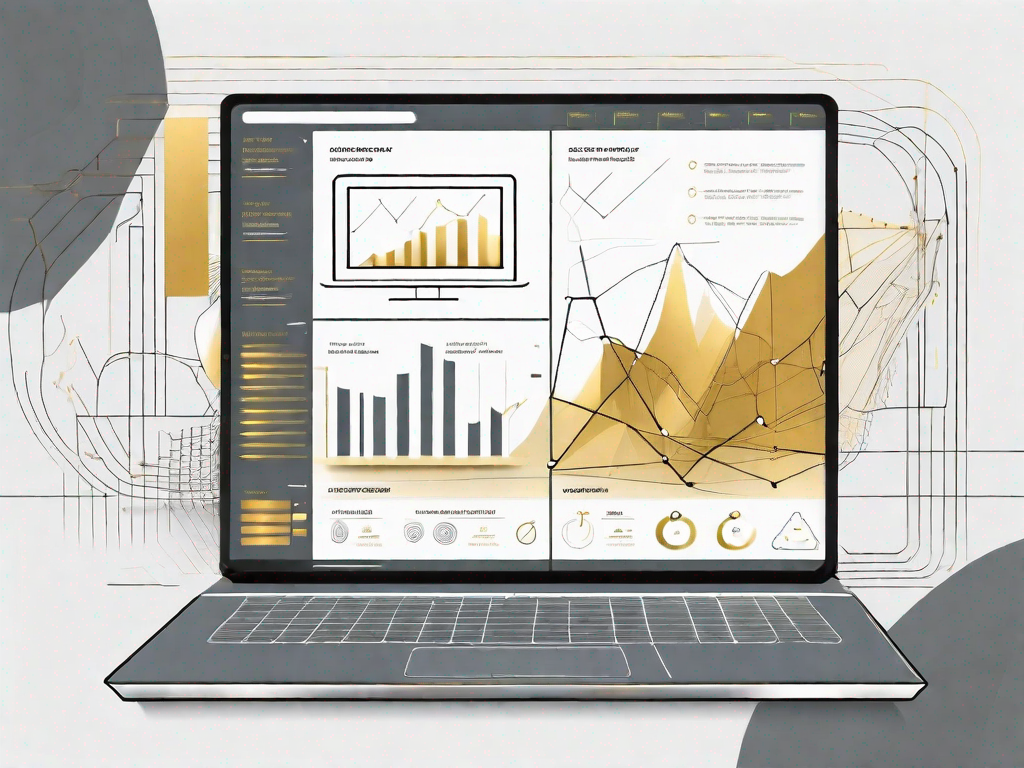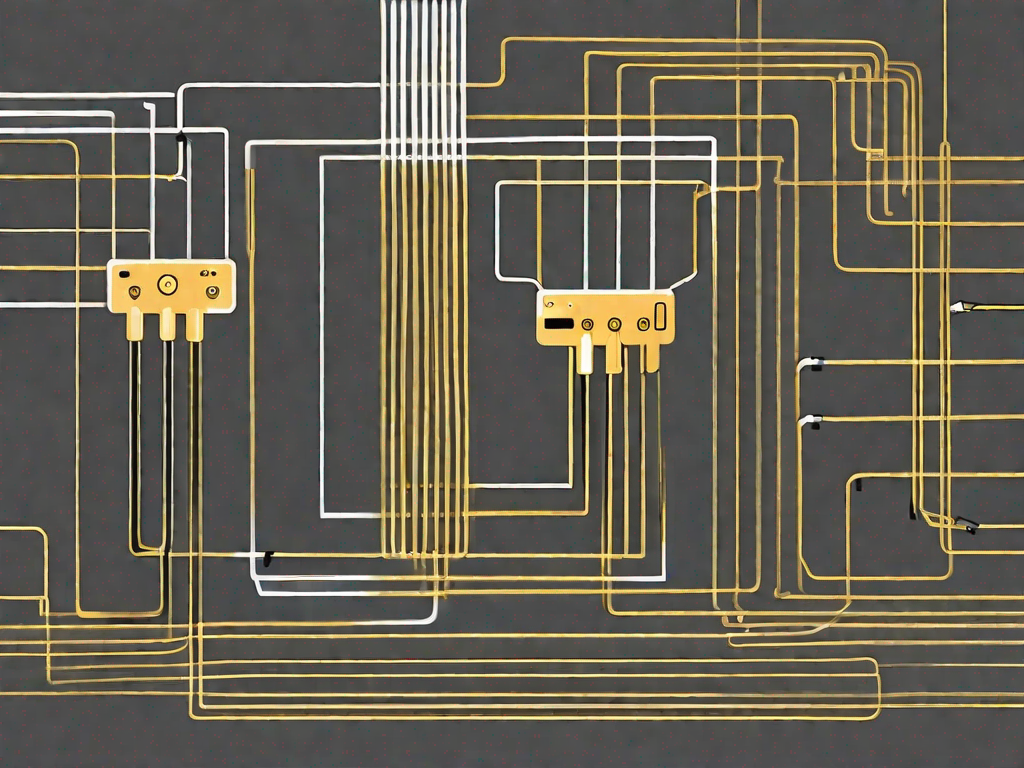Integration of EST4 with other building systems

The integration of building systems has become increasingly important in today’s rapidly advancing technological landscape. In order to maximize efficiency, reduce costs, and enhance the overall functionality of a building, various systems need to be seamlessly integrated. One such system that plays a crucial role in this integration is EST4.
Understanding EST4: A Brief Overview
EST4 is a state-of-the-art building management system that provides comprehensive control and monitoring capabilities for a wide range of building systems. It offers a user-friendly interface and combines advanced technologies to ensure optimal performance and flexibility.
EST4 is designed to revolutionize the way buildings are managed and operated. With its advanced features and seamless integration capabilities, it empowers building owners and facility managers to have full control over their building systems, resulting in enhanced efficiency, reduced energy consumption, and improved occupant comfort.
Key Features of EST4
EST4 boasts a multitude of features that make it an ideal choice for building system integration. Some of its key features include:
- Real-time monitoring and control of multiple systems
- Advanced data analytics for efficient energy management
- Seamless integration with various building systems
- Customizable user interface to meet specific requirements
- Remote access and control capabilities
Real-time monitoring and control of multiple systems is one of the standout features of EST4. It allows users to have a comprehensive view of their building systems, enabling them to identify and address any issues promptly. With the advanced data analytics capabilities, EST4 provides valuable insights into energy consumption patterns, allowing for efficient energy management and cost savings.
EST4’s seamless integration with various building systems is another key advantage. It can easily integrate with HVAC (Heating, Ventilation, and Air Conditioning) systems, lighting systems, security systems, fire protection systems, and more. This integration enables centralized control and monitoring, eliminating the need for multiple control panels and simplifying the management of the entire building.
Moreover, EST4 offers a customizable user interface, allowing users to tailor the system to their specific requirements. Whether it’s adjusting the layout, adding specific features, or creating personalized dashboards, EST4 provides flexibility and adaptability to meet the unique needs of each building and its occupants.
Additionally, EST4 provides remote access and control capabilities, enabling users to monitor and control their building systems from anywhere, at any time. This feature is particularly beneficial for facility managers who need to oversee multiple buildings or for building owners who want to have peace of mind even when they are away.
The Role of EST4 in Building Systems
EST4 serves as the hub for building system integration, acting as a central command center that brings together various systems under one roof. It enables the synchronization and coordination of these systems to ensure smooth operation and optimal performance.
From HVAC and lighting to security and fire protection, EST4 seamlessly integrates all these subsystems, allowing for centralized control and monitoring. This not only streamlines operations but also enhances overall efficiency while minimizing downtime.
EST4 acts as a bridge between different building systems, facilitating communication and data exchange. It ensures that all systems work in harmony, optimizing energy usage, and creating a comfortable and safe environment for building occupants.
Furthermore, EST4 provides comprehensive reporting and analytics capabilities, generating detailed insights into system performance, energy consumption, and potential areas for improvement. This data-driven approach empowers facility managers to make informed decisions, implement energy-saving strategies, and continuously optimize building performance.
In conclusion, EST4 is a cutting-edge building management system that offers advanced control and monitoring capabilities for a wide range of building systems. With its key features, such as real-time monitoring, seamless integration, and remote access, EST4 revolutionizes the way buildings are managed, ensuring optimal performance, energy efficiency, and occupant comfort.
The Importance of System Integration in Buildings
System integration plays a crucial role in modern buildings, offering a wide range of benefits that positively impact occupants, owners, and the environment.
When it comes to building systems, integration is key. By seamlessly connecting various systems and technologies, buildings can operate more efficiently, effectively, and sustainably. Integrated building systems, facilitated by EST4, bring about a host of advantages that enhance the overall performance and functionality of a building.
Benefits of Integrated Building Systems
Integrated building systems offer numerous benefits that contribute to a better building experience for all stakeholders. These benefits include:
- Enhanced energy efficiency and reduced utility costs: By integrating different systems such as lighting, HVAC, and energy management, buildings can optimize energy usage, reduce wastage, and lower utility expenses.
- Improved occupant comfort and productivity: Integrated systems enable better control over environmental conditions, such as temperature, lighting, and air quality, leading to increased occupant comfort and productivity.
- Streamlined maintenance and troubleshooting: With system integration, building operators can monitor and manage multiple systems from a centralized platform, allowing for easier maintenance and quicker troubleshooting of issues.
- Increased safety and security: Integration of security systems, such as access control, video surveillance, and fire detection, enhances the overall safety and security of a building, protecting both occupants and assets.
- Optimized equipment lifecycle and reduced downtime: By integrating systems, building operators can implement predictive maintenance strategies, ensuring timely repairs and replacements, thus extending the lifespan of equipment and minimizing downtime.
Challenges in System Integration
While the benefits of system integration are undeniable, challenges can arise during the integration process. These challenges include:
- Compatibility issues between different systems: Integrating systems from different manufacturers or using different protocols can sometimes lead to compatibility issues, requiring additional effort and resources to overcome.
- Data sharing and communication complexities: Integrating systems often involves the exchange of data between different platforms, which can be complex due to differences in data formats, protocols, and security requirements.
- Cost implications of integration: System integration may require investments in new hardware, software, and infrastructure, which can incur costs that need to be carefully evaluated and justified.
- Training and skill requirements for personnel: Integrating building systems may require specialized knowledge and skills from personnel responsible for system design, installation, and maintenance, necessitating training and development programs.
Despite these challenges, the benefits of system integration far outweigh the difficulties. With careful planning, collaboration, and the right expertise, buildings can achieve seamless integration of their systems, unlocking the full potential of technology to create smarter, more efficient, and sustainable environments.
Steps in Integrating EST4 with Other Building Systems
Integrating EST4 with other building systems involves a thorough and systematic approach, encompassing various stages. By following these steps, a smooth and successful integration can be achieved.
Pre-Integration Considerations
Prior to integration, it is essential to conduct a comprehensive assessment of the existing systems and their compatibility with EST4. This includes evaluating the hardware and software requirements, as well as identifying any necessary upgrades or modifications.
Additionally, a thorough understanding of the desired integration goals and outcomes is crucial. This enables the development of a tailored integration plan that aligns with specific building requirements.
The Integration Process
The integration process involves the physical and virtual connection of EST4 with other building systems. This typically includes:
- Establishing a secure network infrastructure
- Configuring communication protocols and interfaces
- Mapping data points between systems for seamless integration
- Testing and verification of integration functionality
- Training building personnel on the new integrated system
Throughout the integration process, close collaboration between the building management team, system integrators, and EST4 experts is crucial to ensure a successful outcome.
Post-Integration: Maintenance and Upgrades
Once the integration is complete, ongoing maintenance and regular upgrades are essential to ensure the long-term efficiency and performance of the integrated system.
After the successful integration of systems, it is crucial to establish a comprehensive maintenance plan to ensure the smooth operation of the integrated system. This plan should include regular monitoring, system optimization, and the application of software updates and security patches.
Regular monitoring plays a vital role in maintaining system efficiency. By analyzing system performance data, potential bottlenecks and areas for improvement can be identified. This analysis allows for the implementation of corrective measures to optimize system performance and ensure that it operates at its full potential.
In addition to monitoring, applying software updates and security patches is crucial to ensure system stability and protection against evolving cyber threats. As technology advances and new vulnerabilities are discovered, software vendors release updates to address these issues. By regularly updating the integrated system, organizations can stay ahead of potential security risks and maintain the integrity of their data.
Ensuring System Efficiency Post-Integration
To maintain system efficiency, regular monitoring and system optimization are essential. This involves analyzing system performance data, identifying areas for improvement, and implementing corrective measures. Additionally, software updates and security patches should be applied to ensure system stability and protection against evolving cyber threats.
Regular system optimization is an ongoing process that involves fine-tuning various components of the integrated system. This can include adjusting hardware configurations, optimizing database queries, or refining network settings. By continuously optimizing the system, organizations can ensure that it operates at peak performance, resulting in improved productivity and user satisfaction.
Furthermore, staying up-to-date with the latest technological advancements and industry standards is crucial for maintaining system efficiency. By regularly evaluating new technologies and industry best practices, organizations can identify opportunities to enhance their integrated system. This may involve adopting new software modules, integrating additional third-party applications, or implementing emerging technologies that can further streamline processes and improve overall efficiency.
Upgrading and Updating Integrated Systems
Building systems evolve over time, and it is crucial to keep pace with changing technologies and industry standards. Upgrading and updating integrated systems, including EST4, helps to leverage new features, enhance system capabilities, and improve overall performance and reliability.
Upgrading integrated systems involves replacing outdated hardware components or software modules with newer, more advanced versions. This can result in improved functionality, increased processing power, and enhanced compatibility with other systems. By upgrading the integrated system, organizations can take advantage of new features and capabilities that were not available in previous versions, allowing them to stay competitive in a rapidly evolving technological landscape.
In addition to hardware and software upgrades, regular updates are necessary to address any bugs or vulnerabilities that may arise. Software vendors frequently release updates to fix known issues and improve system stability. By promptly applying these updates, organizations can ensure that their integrated system remains secure, reliable, and up-to-date.
Moreover, upgrading and updating integrated systems can also provide opportunities for organizations to optimize their processes and workflows. By evaluating the current system and identifying areas for improvement, organizations can implement changes that streamline operations, reduce manual effort, and increase overall efficiency.
Future Trends in Building System Integration
The future of building system integration holds tremendous potential, driven by advancements in technology and evolving industry requirements.
With the rapid advancements in Internet of Things (IoT), cloud computing, and artificial intelligence (AI), the landscape of building system integration is set to undergo a revolutionary transformation. These cutting-edge technologies enable enhanced connectivity, real-time analytics, and predictive maintenance, ushering in a new era of smart and sustainable buildings.
Imagine a future where buildings are not just structures, but intelligent entities that can anticipate and respond to the needs of their occupants. Through IoT, buildings will be equipped with interconnected sensors, devices, and systems that collect and analyze data in real-time. This data will enable building managers to optimize energy consumption, improve security measures, and enhance the overall occupant experience.
Cloud computing will play a crucial role in this future, providing the infrastructure and storage capabilities needed to handle the vast amount of data generated by smart buildings. With cloud-based platforms, building managers will have access to powerful analytics tools that can process and interpret data, providing valuable insights into building performance and efficiency.
Artificial intelligence, on the other hand, will empower building systems to learn and adapt autonomously. AI algorithms will continuously analyze data patterns and make intelligent decisions to optimize building operations. For example, AI-powered HVAC systems will be able to adjust temperature settings based on occupancy patterns and weather forecasts, ensuring optimal comfort while minimizing energy waste.
The Future of EST4 in Integrated Building Systems
As an innovative building management system, EST4 is poised to play a pivotal role in the future of integrated building systems. Its adaptability and scalability make it well-suited for evolving demands and emerging technologies.
EST4 combines the power of IoT, cloud computing, and AI to create a comprehensive solution for building management. Its seamless integration with various subsystems allows for centralized control and monitoring, enabling building managers to optimize performance and efficiency.
One of the key advantages of EST4 is its ability to collect and analyze data from different building systems in real-time. This data-driven approach enables proactive maintenance, as potential issues can be identified and addressed before they escalate. By leveraging predictive analytics, EST4 can detect patterns and anomalies, allowing for predictive maintenance that minimizes downtime and extends the lifespan of building equipment.
Furthermore, EST4’s scalability ensures that it can adapt to the changing needs of buildings of all types and sizes. Whether it’s a small office building or a large commercial complex, EST4 can seamlessly integrate with existing systems and expand as the building grows.
In conclusion, the integration of EST4 with other building systems is a critical aspect of modern building management. By seamlessly bringing together various subsystems, EST4 enables enhanced efficiency, improved comfort, and reduced operational costs. With careful planning, systematic integration, and ongoing maintenance, the benefits of integrating EST4 with other building systems can be fully realized, paving the way for a smarter, more connected, and sustainable future.


